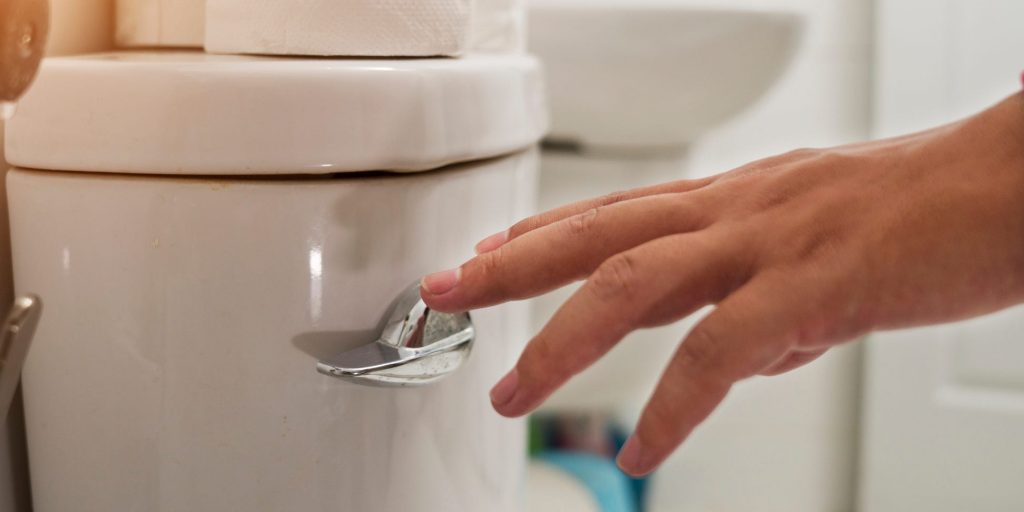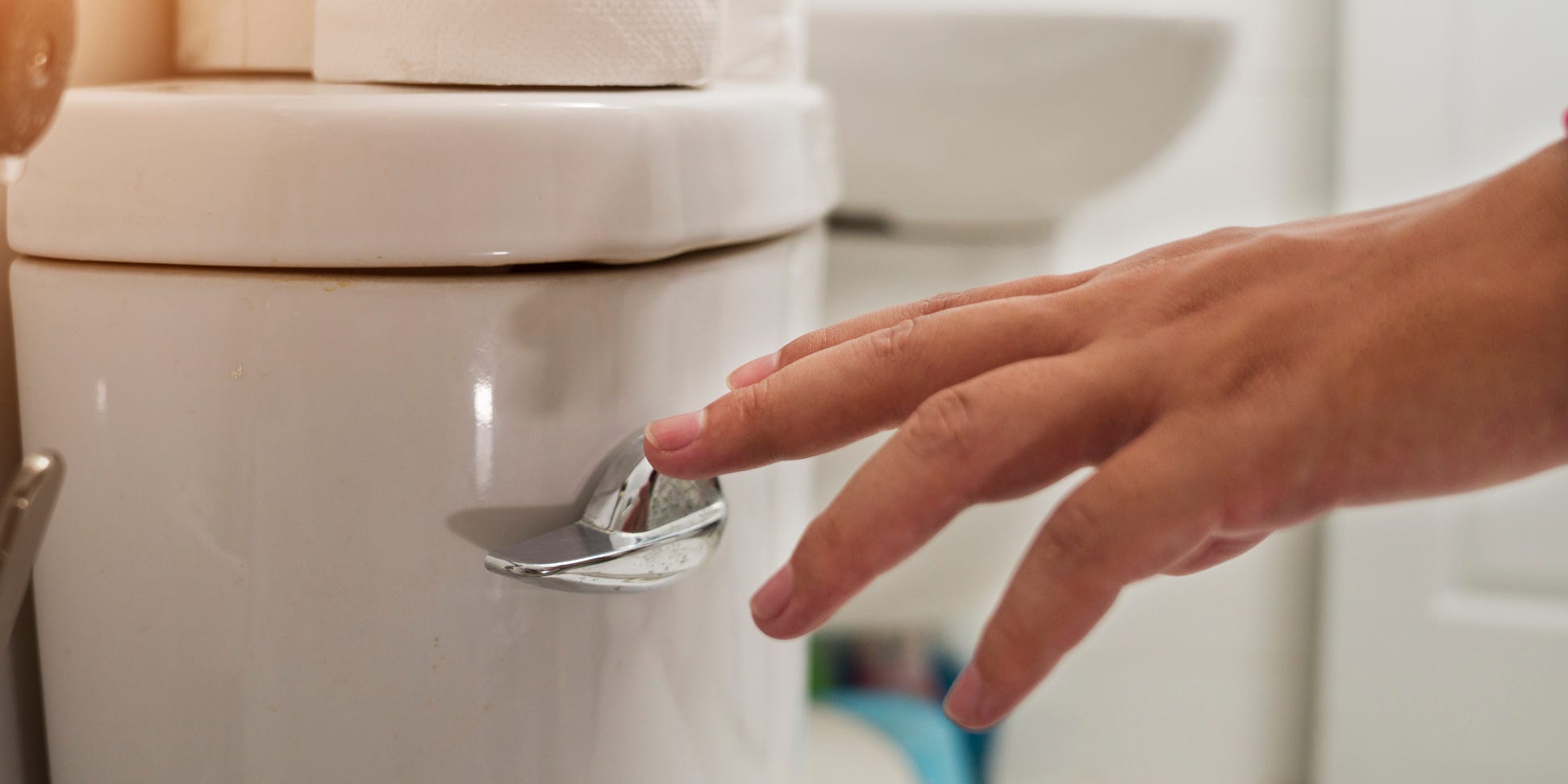
Thana Prasongsin/Getty Images
- If you don't have a plunger, try natural solutions like baking soda and vinegar to unclog your toilet.
- Do not continue to flush your toilet until the clog is broken down, or you'll risk a messy overflow.
- If your toilet won't stop running, make sure to turn off the water as quickly as possible.
- Visit Insider's Home & Kitchen Reference library for more stories.
There's nothing worse than hitting flush and watching the toilet bowl water rise up around a clog, except for hitting flush, watching the water rise, and realizing there's no toilet plunger in the house. No need to panic though – there are plenty of workarounds that'll get your toilet back in working order without making a mess or having to stress-run to the store.
"Personally, I find using a plunger to be an unsanitary practice to unclog a toilet," says Jack Miller, founder of How I Get Rid Of and an expert in using natural and unusual approaches to home improvement. "It's an instant bacteria cesspool after just one use."
Miller and Nikki Byrne, manager at Active Plumbing & Heating, point to some clever and simple alternatives to unclog a toilet apart from a plunger that are more efficient and much more sanitary.
Baking soda and vinegar
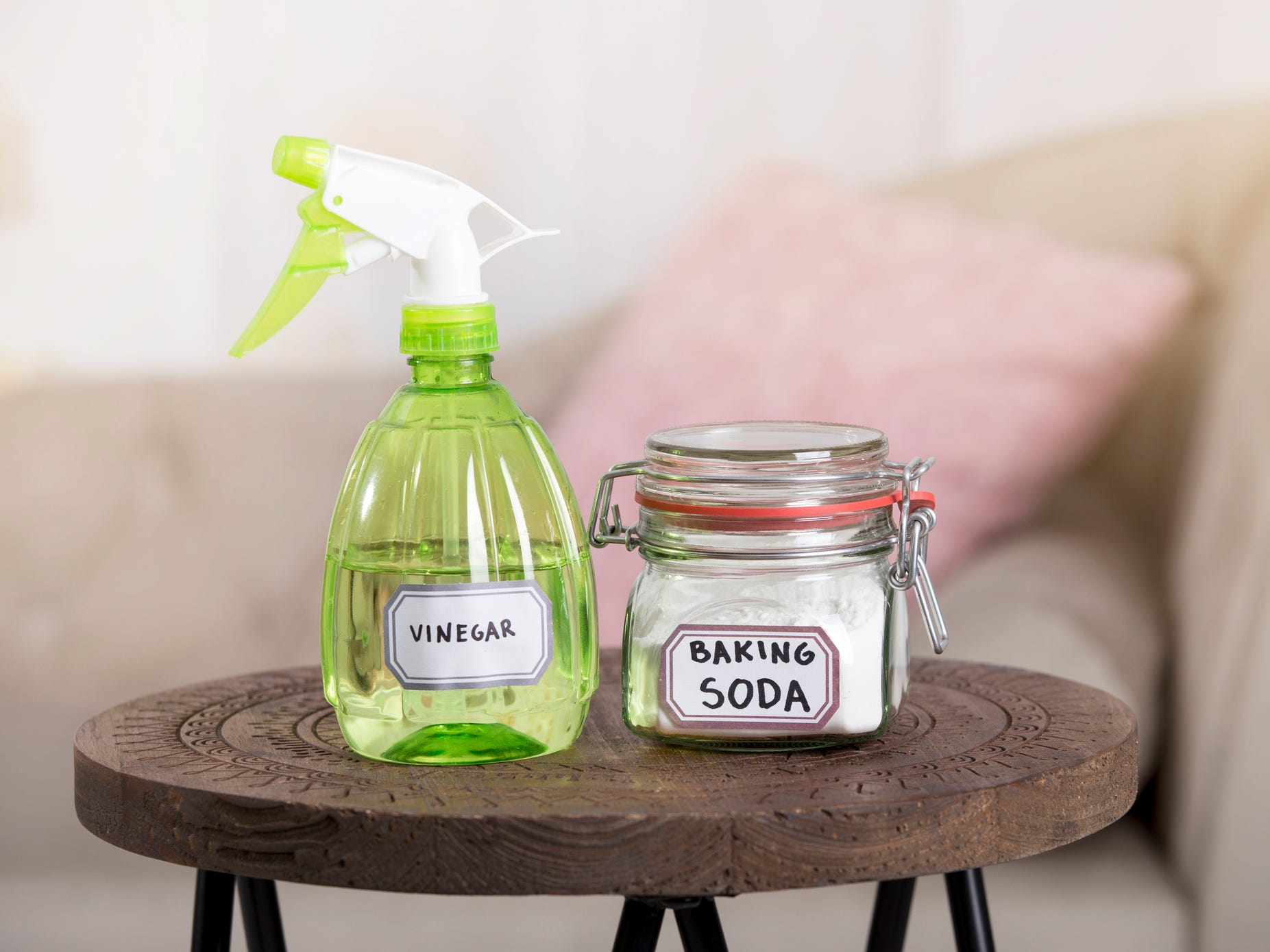
Helin Loik-Tomson/Getty Images
Miller suggests taking about a cup of each and pouring it into your clogged toilet. The baking soda goes in first, followed by a slow pour of the vinegar to prevent spillage. Allow that to sit for about 20 minutes. The clog should break down slowly as the water level drops.
Hot water
"A bucket of hot water should help soften whatever is causing the clog," says Miller. The water should be steaming, not boiling. Make sure to pour the water slowly to allow a much longer flow and to gauge how much room you have left in the toilet bowl.
Dishwashing soap
Byrne suggests pouring some dishwashing soap into the toilet to get the clog loosened up. You'll need to pour about half a cup into a half-filled toilet and allow it to sit for 10 to 20 minutes before trying to flush again. "The idea here is to have the soap coat the pipes and allow for easier passing of the clog," says Byrne.
Bath bombs
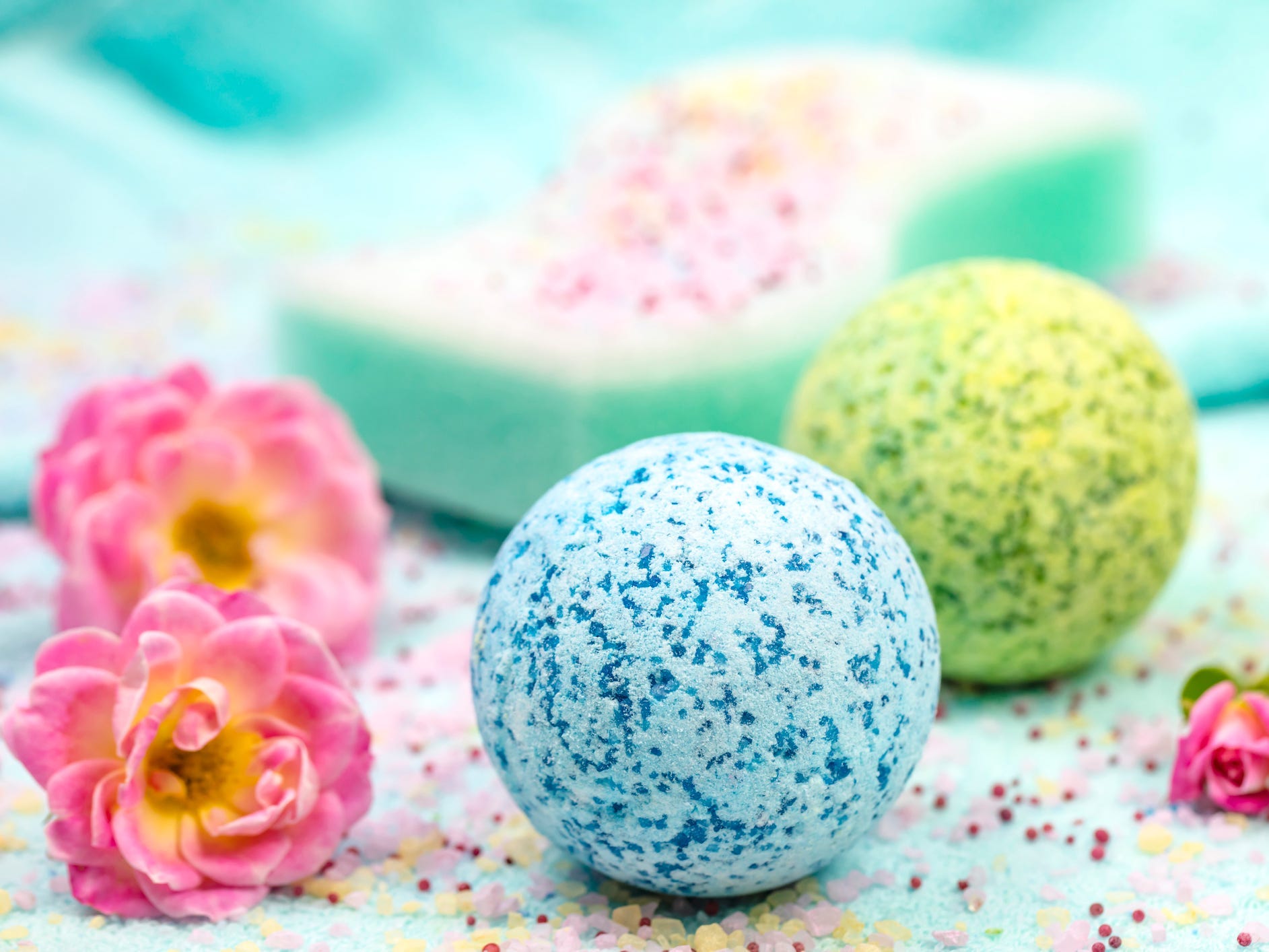
mikroman6/Getty Images
According to Miller, you can also use a small bath bomb to help get the clog moving. Just add a little water to help create a fizzy reaction before dunking it into your toilet bowl. This should help to break up whatever is causing the clog - and might also help with any smells. Just be sure not to avoid those with solid additives like flower petals or glitter, which could further contribute to the clog.
Bleach
Byrne also suggests trying to use a little bleach in order to clear up the clog in an efficient manner. Simply pour 3 to 4 cups of bleach into the toilet bowl and leave it for about 20 minutes before attempting to flush. Note that mixing bleach with other chemicals may cause an adverse reaction. If you choose to use bleach, avoid other possible additives.
Epsom salt
Don't have any bath bombs on hand? According to Miller, epsom salt will work just as well to also create a fizzy reaction in the toilet bowl. Create a mixture using a handful of the bath salts and enough water to coat the salt, then pour it directly into the toilet.
Wire hanger
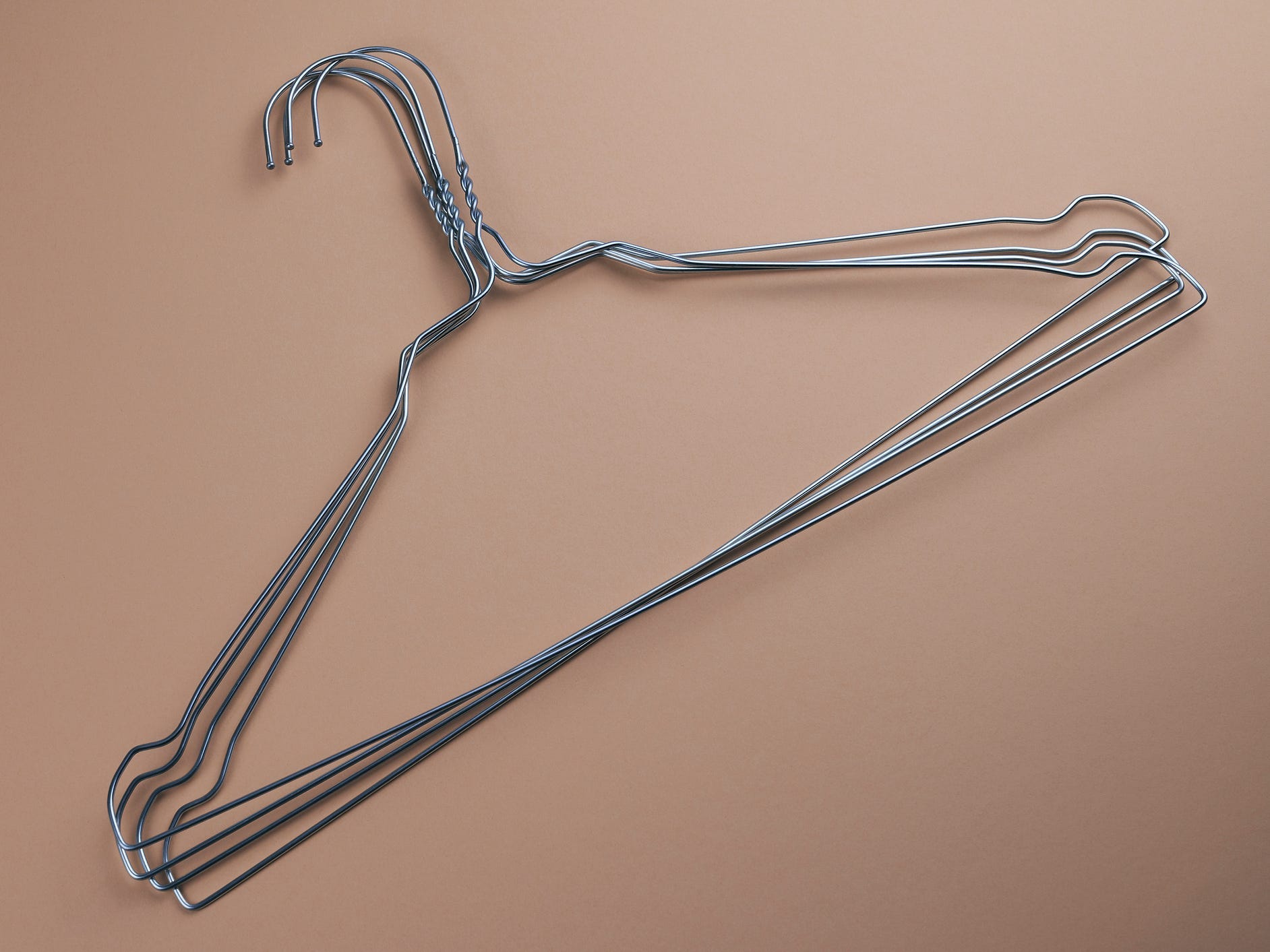
Norman Posselt/Getty Images
The wire hanger trick is going to be the messiest - but it's worth trying as a last resort. According to Byrne, all you have to do is use the wire hanger to give the clog a good prodding to loosen it up before flushing.
Tips for unclogging a toilet without a plunger
While there are a plethora of options for unclogging a toilet without a plunger, it's important to remain safe and sanitary. Make sure to:
- Wear rubber gloves. Consider wearing a pair of rubber gloves, says Miller. It's more for sanitary purposes than protection, as you don't need to break out any toxic chemicals to unclog your toilet.
- Avoid flushing too much. If you haven't cleared the clog yet, Miller suggests avoiding flushing for as long as possible. This will only cause the toilet water to overflow and stink up the entire bathroom.
- Don't use chemical drain cleaners. These drainers usually eradicate clogs by causing a chemical reaction. From that reaction comes some heat build-up, which can lead to a crack in the toilet's porcelain surface.
Insider's takeaway
Realizing you're going to need to unclog a toilet but have no access to a plunger isn't the most pleasant experience - but there are a handful of workarounds that will save you time and help avoid making a mess. DIY options like baking soda and vinegar or dishwashing soap with hot water will help loosen whatever is clogged - but you'll want to avoid anything with toxic chemicals as they could damage your toilet bowl.
